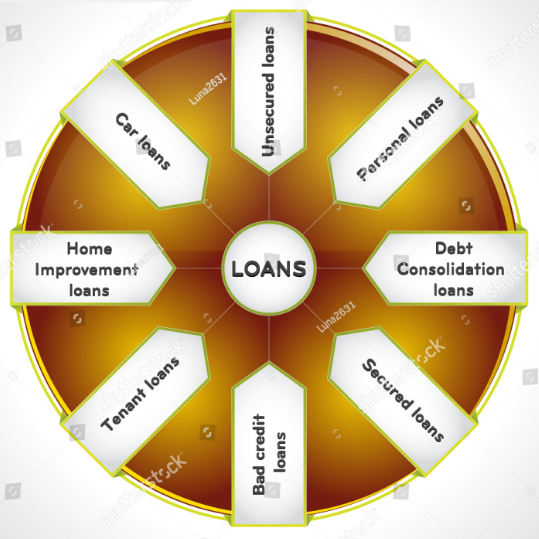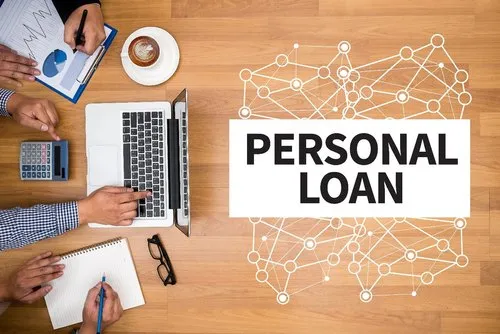Not every person can afford the home renovation. This is where personal loans for home improvement in the USA come in handy. A personal loan can help finance your home improvement project without having to drain your savings account.
In this article, we will explore the different types of personal loans available for home improvement projects, how to qualify and apply for these loans, and the pros and cons of using personal loans for home improvement. Whether you’re looking to renovate your kitchen or add an addition to your home, personal loans for home improvement can help make your dreams a reality.
Personal loans for home improvement are a type of loan that can be used to pay for various home renovation projects. Personal loans for home improvement are available to homeowners and renters alike, and they are an excellent option for people who have a solid credit history.
Types of Personal Loans for Home Improvement

Personal loans are a popular financing option for home improvement projects. They are versatile and can be used for a range of expenses, from small DIY projects to large-scale renovations. Here are the different types of personal loans available for home improvement projects:
-
- Secured Personal Loans.
-
- Unsecured Personal Loans.
-
- Home Equity Loans.
-
- Personal Loans for Bad Credit.
-
- Home equity lines of credit (HELOCs).
-
- Credit card loans.
How to Qualify for a Personal Loan for Home Improvement

To qualify for a personal loan for home improvement, lenders typically evaluate several factors to determine a borrower’s eligibility. Here are some of the criteria lenders use to evaluate applicants for personal loans:
-
- Credit Score: Credit score is one of the most important factors that lenders consider when evaluating a personal loan application. A good credit score indicates that the borrower has a history of responsible borrowing and is likely to repay the loan on time. Most lenders prefer borrowers with credit scores of 650 or higher. But, some lenders may be willing to work with borrowers with lower scores.
-
- Income: Lenders also consider the borrower’s income when evaluating their application. A higher income indicates that the borrower has the means to repay the loan. Lenders typically look for borrowers with stable employment and a consistent income stream.
-
- Debt-to-Income Ratio (DTI): Debt-to-income ratio is a measure of the borrower’s debt compared to their income. Lenders use DTI to evaluate the borrower’s ability to repay the loan. A lower DTI indicates that the borrower has less debt compared to their income and is more likely to repay the loan on time.
-
- Collateral: For secured personal loans, lenders may require the borrower to put up collateral, such as a home or car.
-
- Payment History: Lenders also look at the borrower’s payment history on their existing loans and credit cards. A history of on-time payments indicates that the borrower is responsible and likely to repay the loan on time.
How to Apply for a Personal Loan for Home Improvement

Applying for a personal loan for home improvement can seem overwhelming. But the process is straightforward if you have all the necessary documentation and information. Here’s a step-by-step guide on how to apply for a personal loan for home improvement:
-
- Determine how much money you need: Before applying for a personal loan, you need to determine. How much money do you require to complete your home improvement project? Ensure you have a rough estimate of the total cost.
-
- Check your credit score: Your credit score plays a vital role in your loan application process. Before applying for a loan, check your credit score, and work on improving it if needed.
-
- Research lenders: It’s essential to do research to find the best lender for your needs. Consider interest rates, loan terms, and other factors that are important to you.
-
- Gather necessary documents: To apply for a personal loan, you’ll need to provide certain documentation, including proof of income, identification, and proof of address.
-
- Submit an application: Once you’ve gathered all the necessary documentation, you can begin the application process. Many lenders offer online applications, making it easy to apply from the comfort of your home.
-
- Wait for approval: After submitting your application, the lender will review your documentation and determine if you qualify for a loan.
-
- Receive your funds: If your application is approved, the lender will disburse the funds to you.
Documentation requirements for a personal loan for home improvement typically include proof of income, identification, and proof of address. You may also need to provide additional documentation, such as a list of your assets and liabilities or your credit report. Be sure to check with your lender for specific documentation requirements.
Pros and Cons of Personal Loans for Home Improvement

Personal loans can be a good option for financing home improvement projects. But, they also have some drawbacks. Here are some of the pros and cons of using a personal loan for home improvement:
Advantages:
-
- Quick and Easy: Personal loans are often quick and easy to obtain, with many lenders offering online applications and same-day approvals.
-
- No Collateral: Unlike secured loans, personal loans do not require collateral, which means that borrowers do not have to put their assets at risk.
-
- Fixed Interest Rates: Many personal loans have fixed interest rates, which means that the borrower’s payments will remain the same throughout the loan term.
-
- Flexible Repayment Terms: Personal loans typically have flexible repayment terms, with many lenders offering terms ranging from one to seven years.
-
- No Restrictions on Use: Personal loans can be used for a variety of purposes, including home improvement projects. Borrowers have the flexibility to use the funds as they see fit.
Disadvantages:
-
- Higher Interest Rates: It has higher interest rates. Then, home equity loans and other secured loans.
-
- Shorter Repayment Terms: Personal loans typically have shorter repayment terms. Then, home equity loans and other secured loans. Which means that borrowers will have higher monthly payments.
-
- Lower Loan Limits: Personal loans typically have lower loan limits than home equity loans and other secured loans. This means that borrowers may not be able to finance larger home improvement projects.
-
- Impact on Credit Score: Applying for a personal loan can impact the borrower’s credit score, and missed payments can further damage their credit.
-
- Fees: Personal loans may come with fees, such as origination fees or prepayment penalties, which can increase the cost of borrowing.
Top Lenders for Personal Loans for Home Improvement

Here is a list of top lenders offering personal loans for home improvement. Along with some key details about their loan products:
-
- LightStream: LightStream offers unsecured personal loans for home improvement projects, with loan amounts ranging from $5,000 to $100,000 and repayment terms ranging from 24 to 144 months. Interest rates for LightStream loans start at 2.49% APR (with autopay), and there are no fees or prepayment penalties.
-
- SoFi: SoFi offers personal loans for home improvement projects. With loan amounts ranging from $5,000 to $100,000 and repayment terms ranging from 24 to 84 months. Interest rates for SoFi loans start at 5.99% APR (with autopay), and there are no fees or prepayment penalties.
-
- Marcus by Goldman Sachs: Marcus by Goldman Sachs offers personal loans for home improvement projects. With loan amounts ranging from $3,500 to $40,000 and repayment terms ranging from 36 to 72 months. Interest rates for Marcus loans start at 6.99% APR, and there are no fees or prepayment penalties.
-
- Discover: Discover offers personal loans for home improvement projects, with loan amounts ranging from $2,500 to $35,000 and repayment terms ranging from 36 to 84 months. Interest rates for Discover loans start at 6.99% APR, and there are no fees or prepayment penalties.
It’s important to note that interest rates and loan terms can vary depending on the borrower’s credit score, income, and other factors. Borrowers should compare multiple lenders to find the best loan terms and interest rates for their needs.
CONCLUSION
In conclusion, there are many lenders that offer personal loans for home improvement projects. Borrowers should take the time to compare loan terms and interest rates to find the best option for their needs. Some of the top lenders in this space include LightStream, SoFi, Marcus by Goldman Sachs, Discover, Upgrade, and LendingClub.
Each of these lenders offers a slightly different product with varying interest rates, loan amounts, and repayment terms. Borrowers should also consider their own credit score, income, and other factors that may impact their eligibility for a loan. With careful research and consideration, borrowers can find a personal loan that provides. The funding they need to complete their home improvement project on time and on budget.















